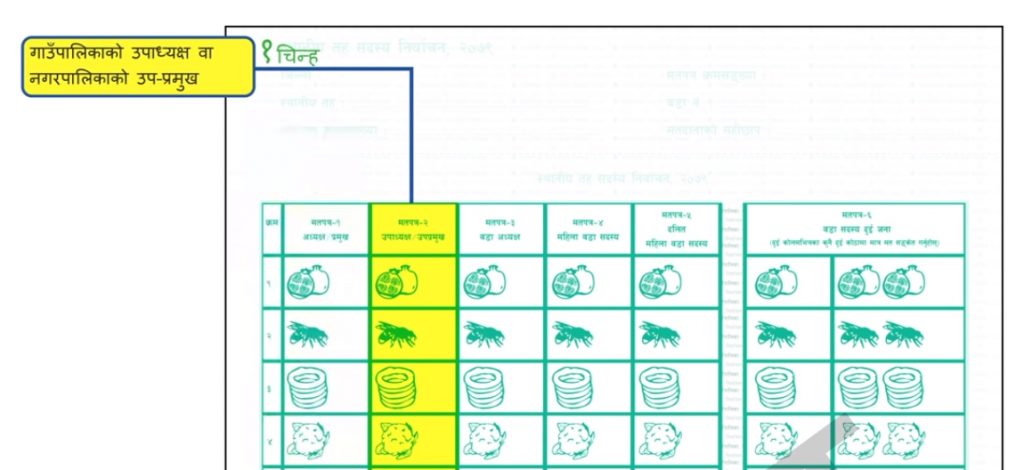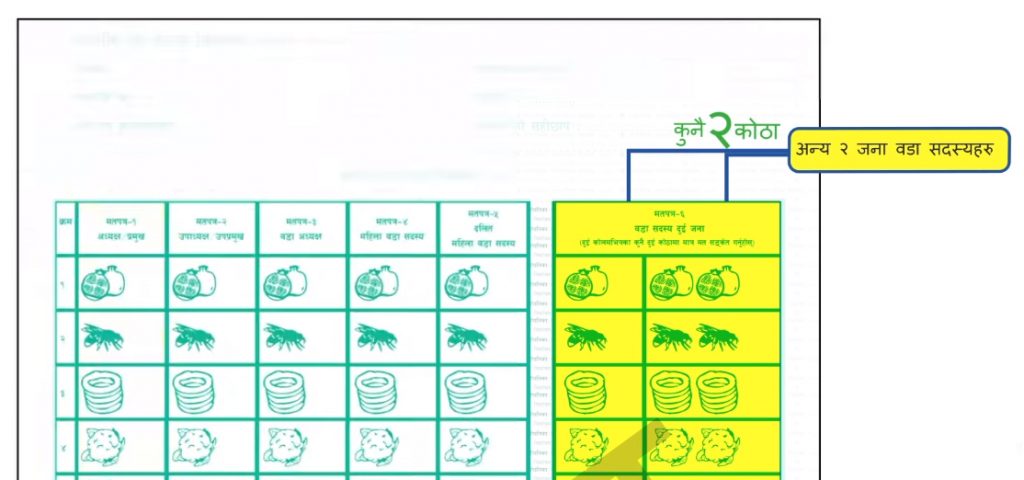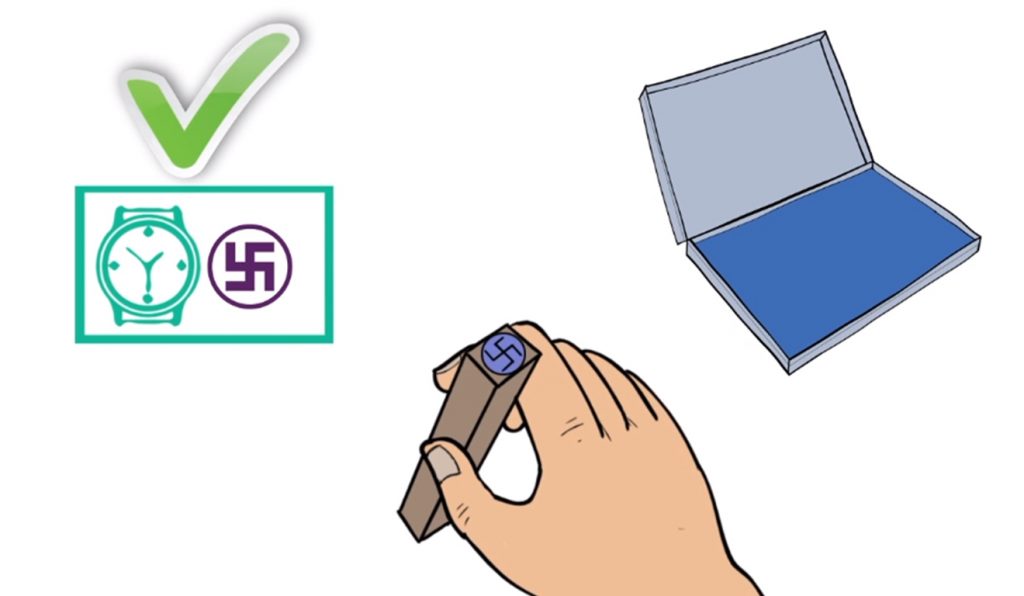On May 13, 2022, Nepal is holding its next local elections in six metropolitan cities, 11 sub-metropolitan cities, 276 municipalities, and 460 rural municipalities. It will be the second municipal elections to be held since the new constitution was promulgated.
In the local elections, 35,221 representatives will be elected in 753 local units will be elected. But, that is a lot of numbers, so one might be confused about whom to vote for and how to vote.
But, do not get confused because as an individual, you have to vote for just seven positions in your local unit only.
So, here are the seven positions you need to vote for in the local elections in 2022.
1. Mayor/chairperson

In the first column of your ballot paper, you will vote for your next mayor or chairperson. Though it is referred to as two positions, you are voting for the same position. Where the mayor is in charge of municipalities, sub-metropolitan cities and metropolitan cities, the chairperson is the leading figure in the rural municipalities. So, based on where you live, you are either voting for your mayor or your chairperson.
In the first column for the mayor, you will find election symbols of all the candidates, either from political parties or independent ones.
The mayor or chairperson is the key figure in all strategic planning as well as in establishing strong governance in their respective local units. It is a gender-neutral role, but, in reality, there is more male presence. Since they are the highest-ranking individual, it is critical to vote for a solid candidate during the local elections. If that authority is not exercised properly, it can be abused, which might jeopardise the municipality’s future. So this is the most important vote you will cast during the local elections.
2. Deputy mayor/vice-chairperson

Next, in the second column of your ballot paper, you will vote for your next deputy mayor or vice-chairperson of your local government. Much like explained before, these two words refer to the same position. The deputy mayor is for municipalities, sub-metropolitan cities and metropolitan cities whereas the vice-chairperson is for rural municipalities. Again, based on where you live, you are either voting for your deputy mayor or your vice-chairperson.
Similarly, in the second column too, you will find electoral symbols of all the candidates, either from political parties or independent ones.
The deputy mayor or vice-chairperson is the key figure to guide the mayor or chairperson in all their endeavours. The election rule has it that any party fielding its candidates for both the mayor and deputy mayor (or chairperson or vice-chairperson) has to make its two candidates representing different gender groups. As a result, the local units saw more female presence in the deputy leadership positions in the 2017 local elections.
In the absence of the mayor or the chairperson, the deputy fills in the void and takes over the responsibilities. In carrying out their duties, they maintain the smooth operation of their local unit. So, you need to remember to vote for a deserving candidate who will aid in the development of your specific area.
3. Ward chairperson

In the third column of the ballot paper during the local elections, you will vote for your ward chairperson. There, you will find electoral symbols of all the candidates, either from political parties or independent ones. There are 6,743 wards across 753 local units and you will be voting for a candidate who will lead your ward for the next five years.
Elected ward chairpersons are in charge of ensuring that their local units are well organised and functioning well as per the constitution and that problems of local units are dealt with in an orderly and efficient way. The chairperson must maximise the contributions of all committee members while also establishing and guiding the team. As a result, if suitable leaders are not elected, such responsibilities may not be carried out correctly.
4. Four ward members
In the next step, you need to vote for four ward members. These four ward members represent three different groups.

In the fourth column of the local elections’ ballot paper, you will vote for a female ward member whereas, in the fifth column, you will vote for a female ward member from a Dalit community.

In the last section, under the sixth and seventh columns, you will have to vote for two other ward members representing the open category.

It means two of these four members must be women, with one of those women belonging to the Dalit community whereas the remaining two members can be men or women.
The four members are responsible for supervising and documenting developments in their ward.
How to vote?

When voting in the local elections, you will be given a ballot paper. After getting it, you will enter the polling booth where you will find a swastika stamp to cast your vote. And, that is all that you require.
In the local elections, you will be voting for seven different positions, so you will have to put a stamp on seven different columns. You need a stamp on the election symbol of the candidate you want to vote for.
Voters must pick their representatives wisely and vote on the proper symbols since the future of their ward is at stake.
Remember to stamp within the box, not touching the edges. If this is the case, the vote will be invalid. You also have to remember that the stamp should not be smudged or unclear to read.
You can find this information in this video published by the Election Commission too.






















